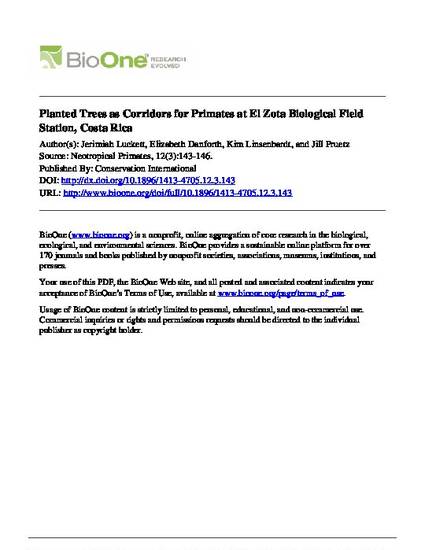
Article
Planted Trees as Corridors for Primates at El Zota Biological Field Station, Costa Rica
Neotropical Primates
Document Type
Article
Disciplines
Publication Date
1-1-2004
DOI
10.1896/1413-4705.12.3.143
Abstract
We conducted a study at the privately owned El Zota Biological Field Station in Costa Rica to assess the effects of forest management techniques on primate ecology and behavior. While many conservation-oriented studies note the need for “corridors” to promote dispersal between isolated habitat fragments, few studies provide quantitative information on their use by primates. From July to August 2002, we studied the three primate species that occur at the El Zota Biological Field Station in Costa Rica — Cebus capucinus, Ateles geoffroyi, Alouatta palliata — to compare their use of planted versus naturally forested areas. We collected approximately 25 hours of data to quantify the general activities exhibited by primates in these types of habitat.
Copyright Owner
IUCN/SSC Primates Specialist Group
Copyright Date
2004
Language
en
File Format
application/pdf
Citation Information
Jerimiah Luckett, Elizabeth Danforth, Kim Linsenbardt and Jill D. Pruetz. "Planted Trees as Corridors for Primates at El Zota Biological Field Station, Costa Rica" Neotropical Primates Vol. 12 Iss. 3 (2004) p. 143 - 146 Available at: http://works.bepress.com/jill-pruetz/20/

This is an article from Neotropical Primates 12 (2004): 143, doi:10.1896/1413-4705.12.3.143. Posted with permission.